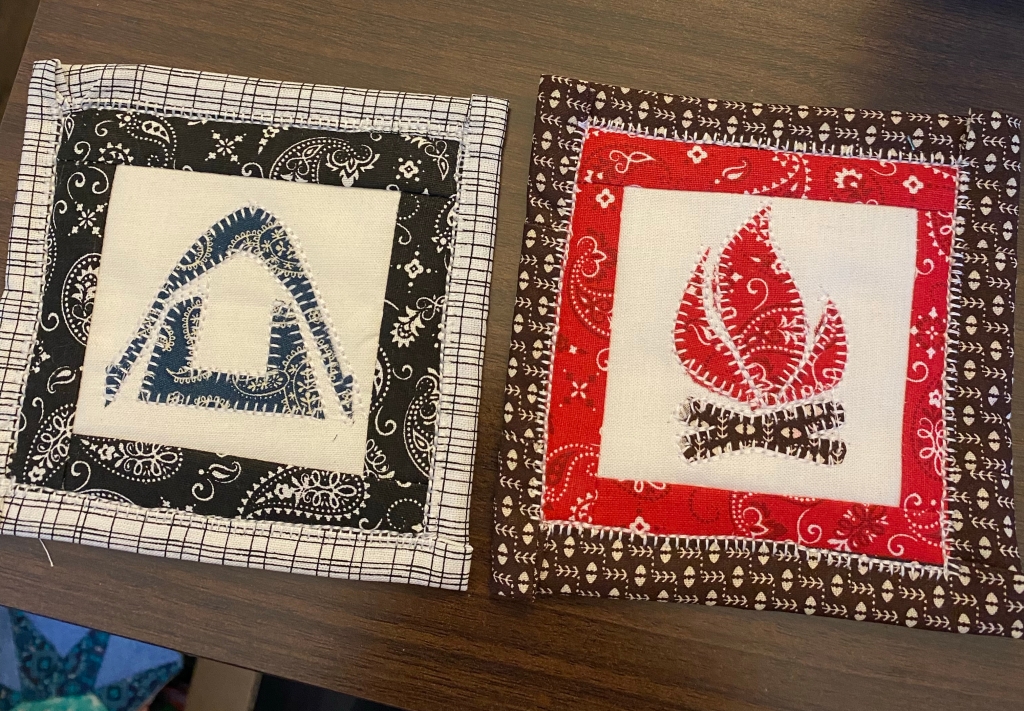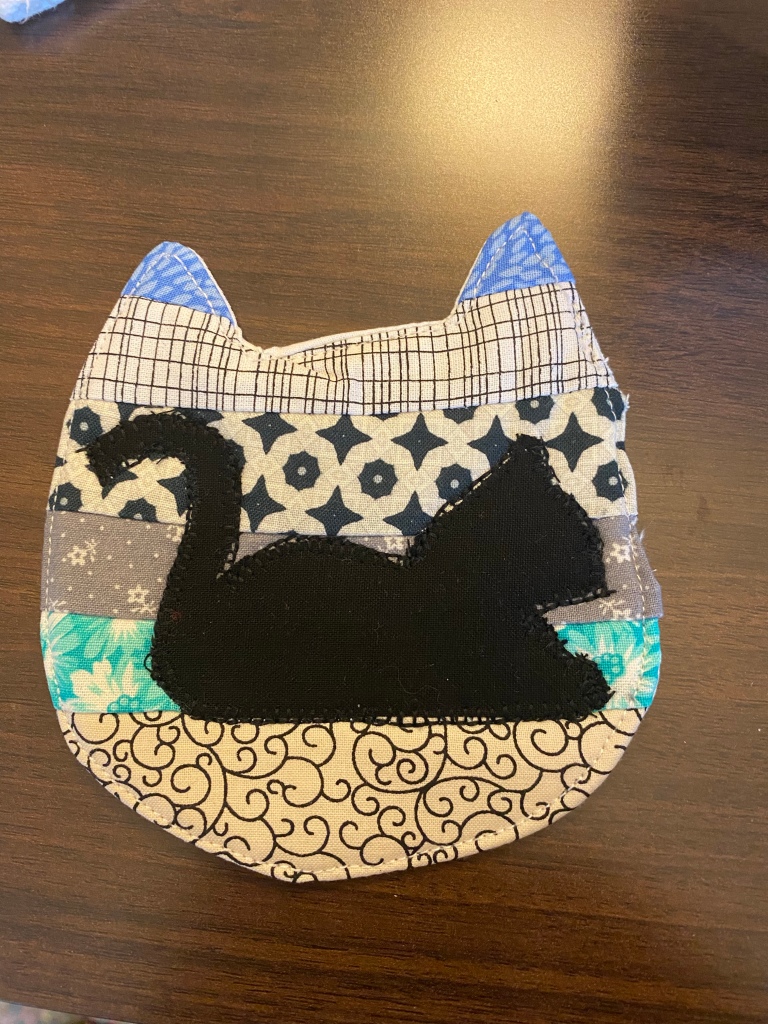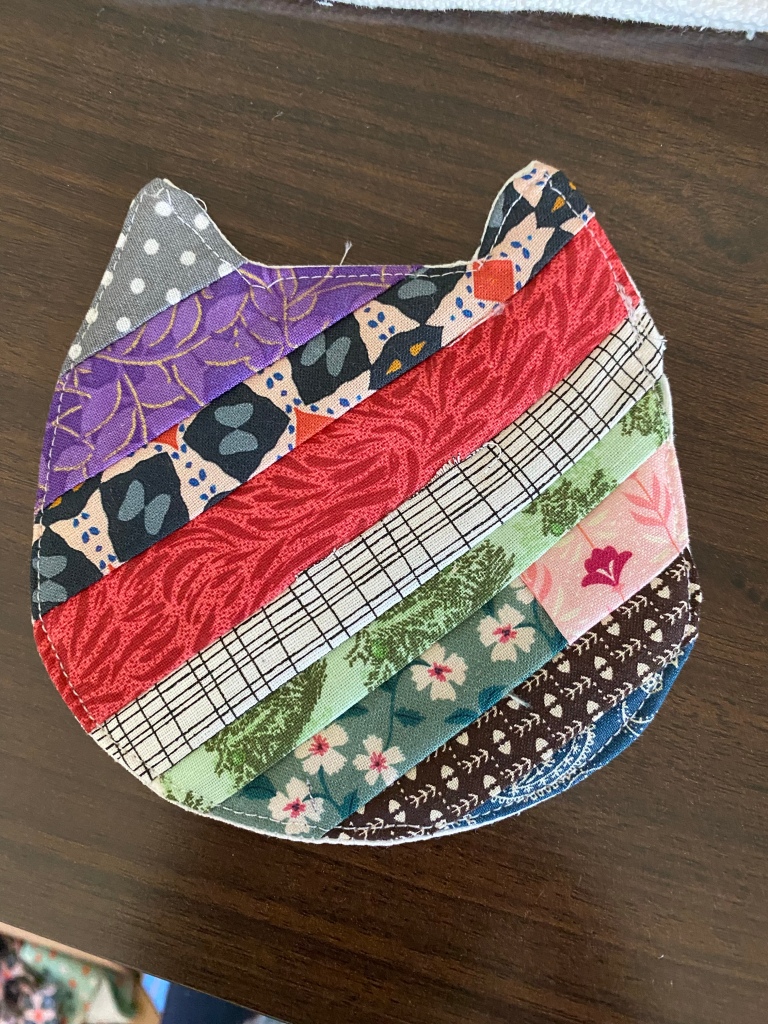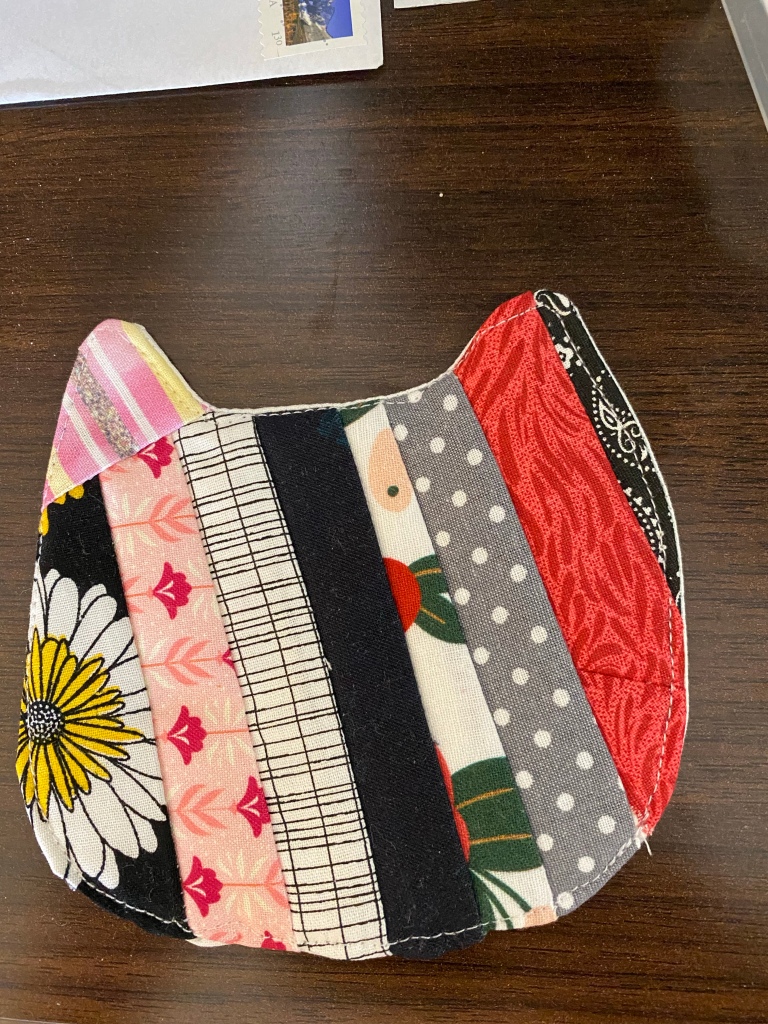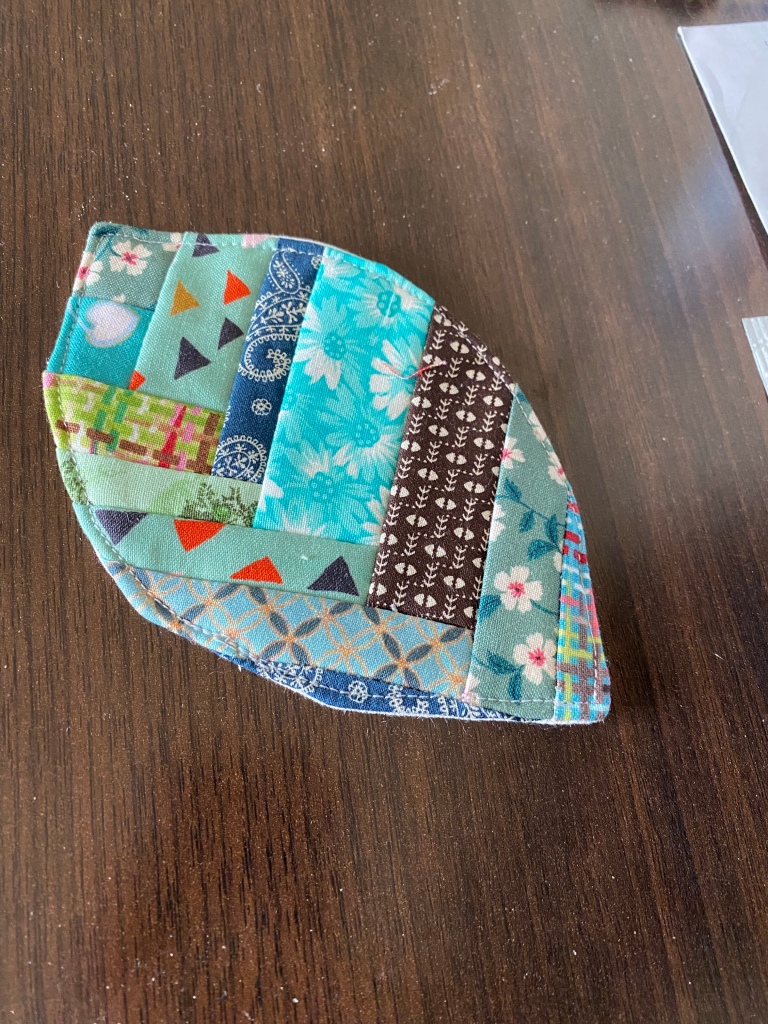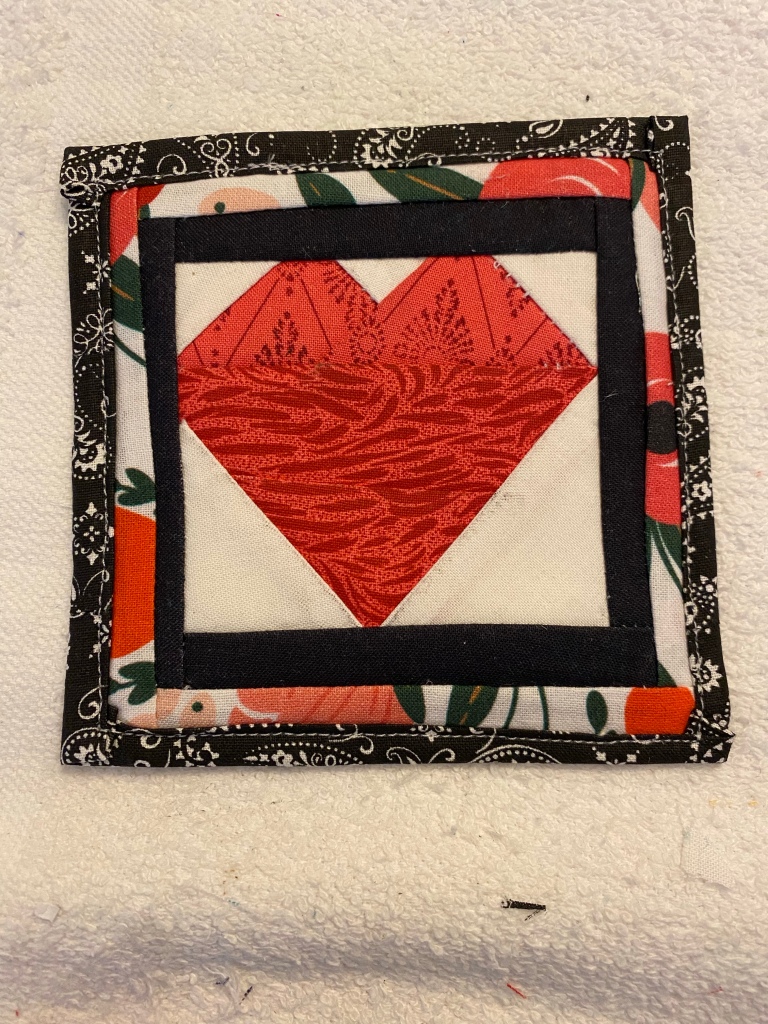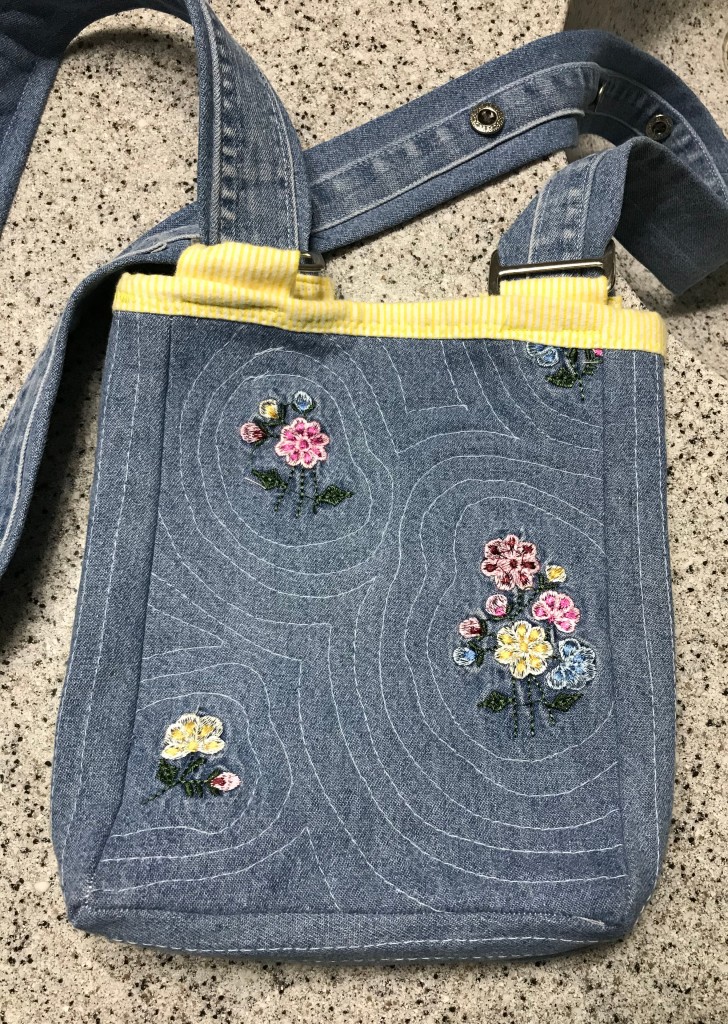I enjoy searching through a thrift store, not knowing what I will find, and what project it will be perfect for. I keep a list on my phone of certain items I’m specifically looking for, like the photo frames in 5×7 or 4×6 sizes that now hold family photos on my wall. Other things seem to jump into my arms and I take them home.
A few days ago I noticed a tub of jumbled shirts. Each one could have stains, holes, or tears, and the price was 25 cents each. The cashier saw me collecting some shirts and she said the more I buy, the better the deal she could give me. I love using scraps of shirts in my projects. One current project is to repair a quilt I had bought at a garage sale. I needed chambray fabric to add sashing between large blocks of flannel fabric, so one of the shirts I picked up was a ladies’ embroidered chambray shirt.
Now that I have looked it over better, I absolutely love the embroidery. Shortcut! I wanted to make another crossbody purse, but add some dimension so all the items I usually carry will fit. I decided to use the embroidered panels as the front and back.
I cut the embroidered panels to the size I wanted, in my case 6 1/2 by 8 1/2 inches. I wanted a thickness of about 2 inches for the sides, so I cut two, 2 1/2 by 8 1/2 inches. To keep it simple, I won’t have a fold-over flap on this one. I like quilting the body of the purse so it is soft, but keeps its shape easily. I cut corresponding lining pieces and (again) flannel as the batting.
I chose to mimic the boundaries of each embroidered section, adding lines as if seeing ripples in water. I used my serger to sew the pieces together. All that was left to do was to bind the top edge and add a strap. For crossbody, of course, the strap needs to be longer than for a shoulder bag.
Real life, in my case, means that quite often my idea is great in theory but something is lost in the translation. I thought it would be great to use the button and buttonhole plackets, sewn to a wider strip of fabric.
I used yellow flannel to bind the top edge and added the strap. The placement is wrong, the width of the strap is way too wide, and the buttons get in the way of the strap sliding through the hardware. Stay tuned. I love the purse otherwise, and I’ll be reworking a strap for it.

